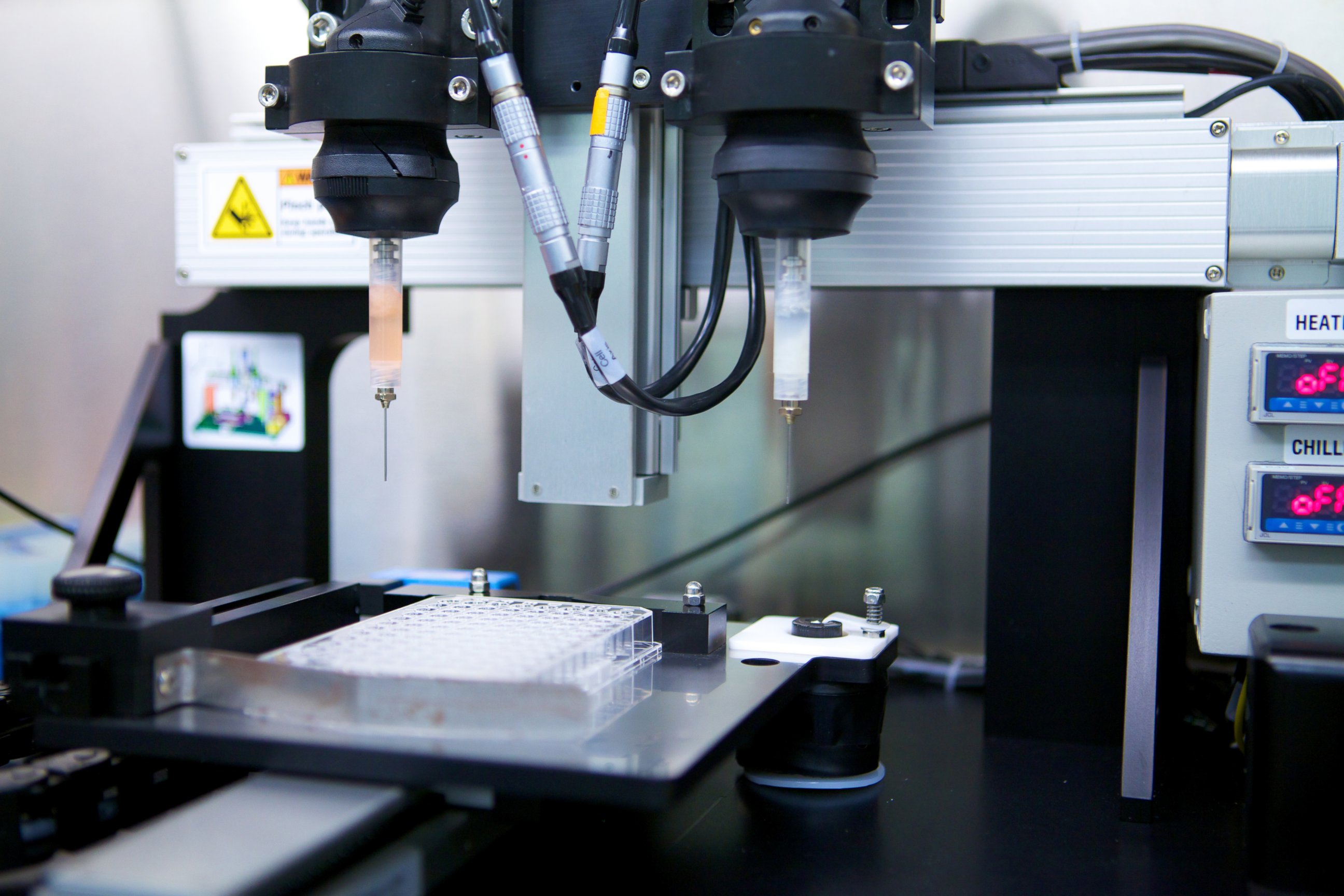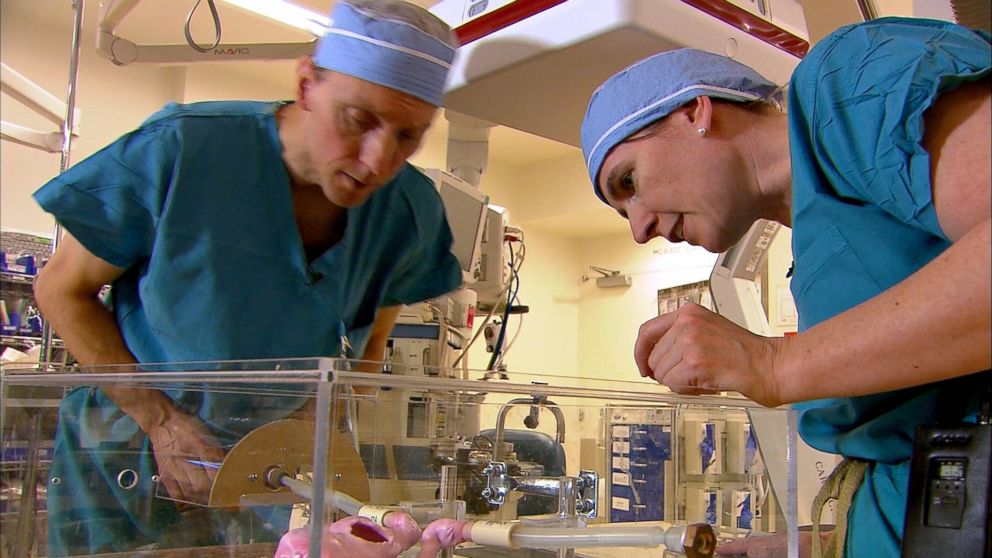Printed Pills to Model Hearts: How 3-D Printing Is Changing Health
FDA approved first pill made with 3-D printer technology.
— -- Quicker and faster 3-D printers have allowed not just amazing objects to be created, seemingly out of nothing, but have started to affect how doctors and medical providers treat patients.
This week, the U.S. Food and Drug Administration announced the approval of the first 3-D printed pill. The tablet, called Spritam, is designed to help treat epilepsy and is created through a layered 3-D printing process that lets the tablet dissolve once taken with water.
Spritam is just the latest medical treatment to utilize 3-D printing. Doctors and medical providers have been starting to use the handy device to do everything from create models for trachea or windpipes to create “tiny livers” that can test new medications.
We’ve put together a list of some of the most amazing medical breakthroughs made possible with 3-D printing.
“Tiny Livers” Could Help Test New Medications

Last year, a San Diego company announced they had managed to “bio-print” tiny livers with a specially designed 3-D printer. The tissue they “print” is combined with three kinds of human liver cells and is designed to allow researchers to test new medications without involving a human patient.
Life-Saving Airway
In 2013, doctors painstakingly created a new airway for an Ohio boy who had been born with a birth defect that left him gasping for air.
Kaiba Gionfriddo was born with a defective airway that kept collapsing. To save his life doctors printed tiny tubes to fuse together in different shapes and sizes until one finally worked for Kaiba. The splint was placed in Kaiba’s bronchus so that it no longer collapsed. Even more remarkably, once the plant was placed it could stay there. It is designed to eventually be absorbed into the body.
New "Bionic" Hands
One of the most remarkable ways 3-D printing is now being used is as a way to create cheaper prosthetics.
A boy born without an arm named Alex was able to get a new “bionic” hand thanks to the help of a few innovative university students and a 3-D printer. Last year at the University of Central Florida student spent 8 weeks coming up with a special prosthetic design that only cost a few hundred dollars in raw materials. They said they wanted to create a model prosthetic far cheaper than the other options that can run tens of thousands of dollars.
A Practice Heart

In Seattle, doctors have been able to use 3-D printing technology to “practice” risky surgeries so that they will face fewer surprised in the operating room.
Kami Sutton was born with her heart “backwards” and faced numerous surgeries as a result. For a recent procedure her doctor was able to take multiple scans of Sutton’s heart and print out a model version.
“Kami’s heart is truly one-of-a-kind,” Dr. Stephan Seslar, a congenital heart disease specialist and electrophysiologist at Seattle Children’s Hospital and University of Washington Medical Centersaid said on the Seattle Children’s Hospital website. “Operating on her without understanding the anatomy of her heart better could be very dangerous.”
A New Skull

A U.K. man was able to have part of his skull rebuilt thanks to a 3-D printer.
Stephen Power broke his cheek bones, eye sockets, upper jaw and skull in a 2013 crash. His injuries were so severe doctors were unable to do full reconstruction at the time of his accident. To help power his doctors instead created 3D replica bones from titanium all carefully printed in the shape of his face.
"This is really the first time we've taken it to this stage, where everything to the very last screws being inserted has been planned and modeled in advance - and worked sweetly," said Adrian Sugar, a maxillofacial surgeon with the Center for Applied Reconstructive Technologies in Surgery, said in a statement.
The Associated Press contributed to this article.